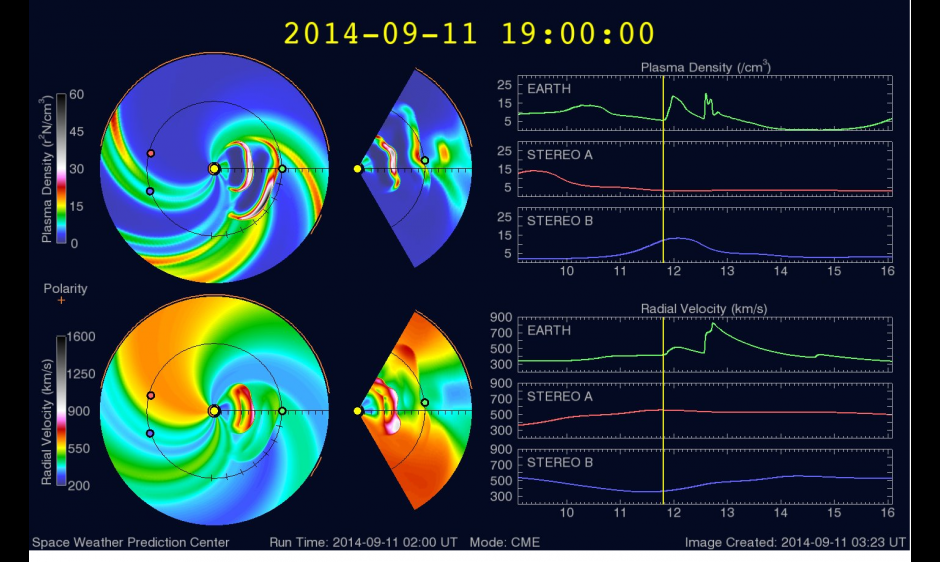
G2 (Moderate) geomagnetic storms remain in the forecast for September 12th as a result of the coronal mass ejection (CME) associated with the R1 (Minor) solar flare observed on the 9th. The latest WSA-Enlil model run has the CME associated with yesterday's R3 (Strong) solar flare arriving mid to late day on that same day. A G3 (Strong) Geomagnetic Storm Watch has been issued for September 13th due to the combined influence of these two events with G1 (Minor) storming anticipated to continue into September 14th. In addition, the S1 (Minor) solar radiation storm that is in progress as a result of the eruption yesterday is expected to persist for the next few days. Keep in mind that the forecast periods listed are in Universal Time so aurora watchers in the northern U.S. should be looking for possible activity both Thursday and Friday nights. Stay tuned for updates.